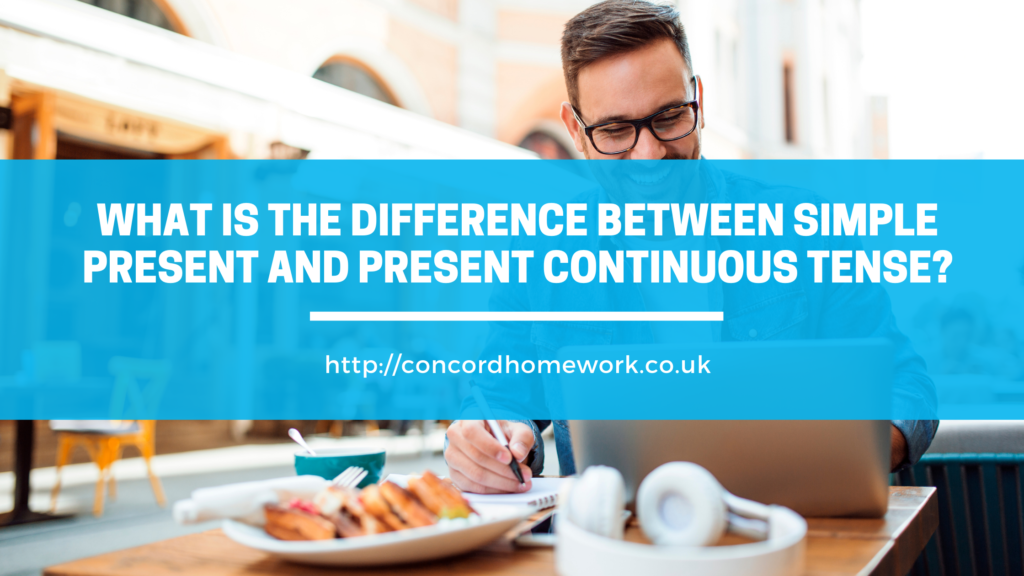The following table clearly explains the difference between the simple present and present continuous tense.
1-1 THE SIMPLE PRESENT AND THE PRESENT PROGRESSIVE
| (a) Ayla takes a shower every day. (b) I usually read the newspaper in the morning. (c) Babies cry. Birds fly. (d) NEGATIVE: It doesn’t snow in Sudan. (e) QUESTION: Does the teacher speak slowly? | The SIMPLE PRESENT expresses daily habits or usual activities, as in (a) and (b). The simple present expresses general statements of fact, as in (c). In sum, the simple present is used for events or situations that exist always, usually, or habitually in the past, present, and future. | |
| (f) Ann can’t come to the phone right now because she is taking a shower. (g) I am reading my grammar book right now. (h) Jimmy and Susie are babies. They are crying. I can hear them right now. Maybe they are hungry. (i) NEGATIVE: It isn’t snowing right now. (j) QUESTION: Is the teacher speaking right now? | The PRESENT PROGRESSIVE expresses an activity that is in progress (is occurring, is happening) right now. The event is in progress at the time the speaker is saying the sentence. The event began in the past, is in progress now, and will probably continue into the future. FORM: am, is, are + -ing. |
1-2 FORMS OF THE SIMPLE PRESENT AND THE PRESENT PROGRESSIVE
| SIMPLE PRESENT | PRESENT PROGRESSIVE | |
| STATEMENT | I-You-We-They work. He-She-It works. | I am working. You-We-They are working. He-She-It is working. |
| NEGATIVE | I-You-We-They do not work. He-She-It does not work. | I am not working. You-We-They are not working. He-She-It is not working. |
| QUESTION | Do I-you-we-they work? Does he-she-it work? | Am I working? Are you-we-they working? Is he-she-it working? |
| CONTRACTIONS pronoun +- be | I + am = I’m working. you, we, they + are = You’re, We’re, They’re working. he, she, it + is = He’s, She’s, It’s working. |
| do + not | does + not = doesn’t She doesn’t work. do + not = don’t I don’t work. |
| be + not | is + not = isn’t He isn’t working, are + not = aren’t They aren’t working. (am + not = am not* I am not working.) |
Download “What is the difference between simple present and present continuous tense?” in PDF.
Download “What is the difference between simple present and present continuous tense?” the Exercises in PDF.
“Thank you for taking the time to explore this topic with us! We hope you found the information helpful and insightful. Have any thoughts, questions, or additional examples to share? We’d love to hear from you in the comments below!
Don’t forget to spread the word by sharing this blog with your friends, family, and colleagues. Together, let’s continue to learn, grow, and connect with the world around us. Happy reading and sharing!”

